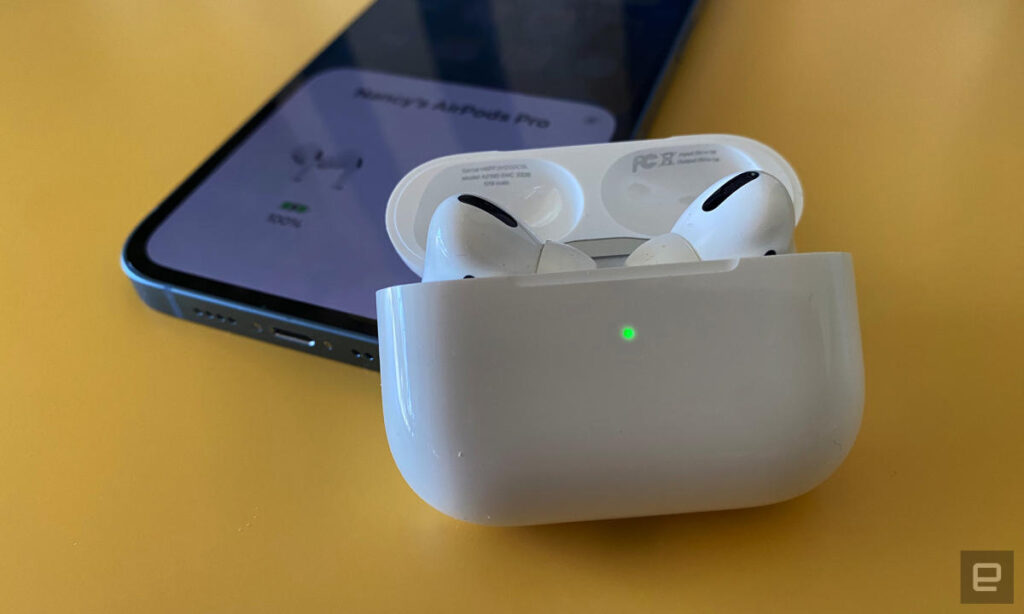Seamless Connections: A Guide to Pairing AirPods with Different Devices
Apple’s AirPods have revolutionized the way we listen to music, take calls, and interact with our devices wirelessly. Their sleek design, portability, and ease of use have made them a popular choice for Apple users and beyond. This comprehensive guide empowers you to effortlessly connect your AirPods to various devices, ensuring a seamless listening experience.
Understanding AirPods: Different Models, Similarities
Apple offers several AirPods models, each boasting unique features:
- AirPods (2nd generation): The classic AirPods design with improved sound quality and voice control with Siri.
- AirPods (3rd generation): Features a redesigned contoured fit, improved battery life, and spatial audio for an immersive listening experience.
- AirPods Pro: Offers active noise cancellation, transparency mode for ambient sound awareness, and a customizable fit with ear tips.
- AirPods Max: Apple’s over-ear headphones with superior sound quality, active noise cancellation, and a luxurious design.
Despite their variations, all AirPods share a core functionality – connecting wirelessly to your devices via Bluetooth. The pairing process is generally similar across different models and devices.
Connecting AirPods to Apple Devices: A Match Made in Cupertino
The magic of Apple’s ecosystem shines through when connecting AirPods to Apple devices. Here’s how to achieve a seamless connection:
-
For iPhones, iPads, and iPod Touches:
- Open the Charging Case: With your AirPods inside the charging case, open the lid.
- Bring AirPods Near Your Device: Hold the charging case close to your unlocked iPhone, iPad, or iPod Touch.
- Animation Appears: An animation showing your AirPods and a “Connect” button will appear on your device’s screen.
- Tap “Connect”: Tap the “Connect” button to pair your AirPods.
-
For Macbooks:
- Open System Preferences: Click on the Apple icon in the top left corner of your screen and select “System Preferences.”
- Access Bluetooth: Go to “Bluetooth” within System Preferences.
- AirPods in Charging Case: With your AirPods inside the charging case, open the lid and place the case near your Macbook.
- Look for AirPods: Your AirPods should appear in the list of available Bluetooth devices on your Macbook.
- Click “Connect”: Click on the name of your AirPods to establish the connection.
Once paired, your AirPods will automatically connect to your Apple device whenever you remove them from the charging case and have them near your device.
Connecting AirPods to Android Devices: Expanding the Horizon
While Apple devices offer a more streamlined experience, AirPods can also be connected to Android devices. Here’s how:
-
Open the Charging Case: With your AirPods inside, open the lid of the charging case.
-
Go to Bluetooth Settings: On your Android device, navigate to the Bluetooth settings. This process may vary slightly depending on your device’s model and Android version.
- Typically, you can access Bluetooth settings by swiping down from the top of your screen to access the notification panel, then tapping on the Bluetooth icon. Alternatively, you can find Bluetooth settings within your device’s main settings menu.
-
Search for Devices: In your Bluetooth settings, ensure Bluetooth is turned on and search for available devices.
- Your AirPods should appear on the list as “AirPods” or “AirPods Pro.”
-
Tap to Pair: Select your AirPods from the list of available devices to initiate pairing.
Important Note: Some functionalities, like automatic ear detection and battery level indicators, might be limited when using AirPods with Android devices compared to Apple devices.
Connecting AirPods to Windows PCs: Bridging the Gap
Similar to Android devices, AirPods can connect to Windows PCs via Bluetooth. Here’s the process:
-
Open the Charging Case: With your AirPods inside, open the lid of the charging case.
-
Access Bluetooth Settings: On your Windows PC, right-click on the speaker icon in the taskbar (located at the bottom right corner of your screen) and select “Open sound settings.”
-
Click “Add device”: In the sound settings menu, click on “Add device” to search for new Bluetooth devices.
-
Select AirPods: Your AirPods should appear in the list of available devices. Choose “AirPods” or “AirPods Pro” from the list.
-
Connect: Click “Connect” to pair your AirPods with your Windows PC.
Similar to Android devices, functionality might be limited when using AirPods with Windows PCs compared to Apple devices.
Troubleshooting Tips: Ensuring a Smooth Connection
Even with user-friendly AirPods, connection issues can occasionally arise. Here are some tips to troubleshoot common problems:
- Ensure Bluetooth is Enabled: Double-check that Bluetooth is turned on for both your AirPods and the device you’re trying to connect to.
- Check Charging Case Battery: A low battery in the charging case can prevent pairing. Make sure your AirPods case has enough charge.
- Forget Device and Re-Pair: If your AirPods aren’t connecting properly, try forgetting the device from your Bluetooth settings and re-pairing them from scratch.
- Restart Devices: Sometimes, a simple restart of your AirPods (by placing them in the case and closing the lid for 30 seconds) and your device can resolve connection issues.
- Update Software: Outdated software on your AirPods or device can cause compatibility problems. Ensure you have the latest software updates for both.
- Reset AirPods: If all else fails, consider resetting your AirPods to factory settings. The reset process varies slightly depending on the model you have. Consult Apple’s support website for specific instructions on resetting your AirPods model.
Beyond the Basics: Advanced Features and Customization
For those who want to optimize their AirPods experience, here are some additional features to explore:
- Double-Tap Controls: AirPods allow you to control playback and other functions by double-tapping on one of the AirPods. You can customize these double-tap controls through your Bluetooth settings on Apple devices.
- Spatial Audio (AirPods Pro and AirPods Max): This feature creates a more immersive listening experience by simulating surround sound. You can enable or disable spatial audio through your device’s Control Center on Apple devices.
- Noise Cancellation (AirPods Pro): AirPods Pro offer active noise cancellation to block out ambient noise. You can control noise cancellation modes and adjust transparency mode settings through your device’s Control Center on Apple devices.
FAQ: Unleashing the Potential of Your AirPods
This section addresses frequently asked questions regarding AirPods:
- Can I connect AirPods to multiple devices at once?
While AirPods can’t be seamlessly connected to multiple devices simultaneously, they can switch between Apple devices connected to the same iCloud account with relative ease. For other devices, you’ll need to manually connect and disconnect them from your AirPods.
- How long does it take to charge my AirPods?
The charging time varies depending on the model. In general, AirPods can charge relatively quickly. A 15-minute charge in the case typically provides several hours of listening time.
- How do I check the battery level of my AirPods?
For Apple devices, opening the AirPods case near your unlocked device will display the battery level for both the AirPods and the charging case. For other devices, the process might vary, but the battery level might be displayed when connected via Bluetooth settings.
- What if I lose one of my AirPods?
You can purchase a replacement AirPod from Apple. The replacement will pair automatically with your existing AirPod.



